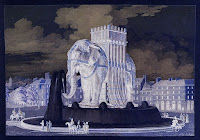'The Louvre realized a kind of Kantian ideal for art as the object of disinterested contemplation. It had from the start its dissenters, notably the aesthetic and architectural theorist Quatremère de Quincy, who in 1796 led fifty artists in a protest against the removal of Italian masterpieces from their original settings. The battle over the museum as the place where art is stripped from its original context and shown in a new setting has been with us since the first years of the first museum. From the outset, the museum as collected booty had its justifications as well.'
- ... encyclopedic imagination, something that you would ascribe to one of Balzac’s maniacal collectors or one of Maupassant’s fetishists, rather than to...













